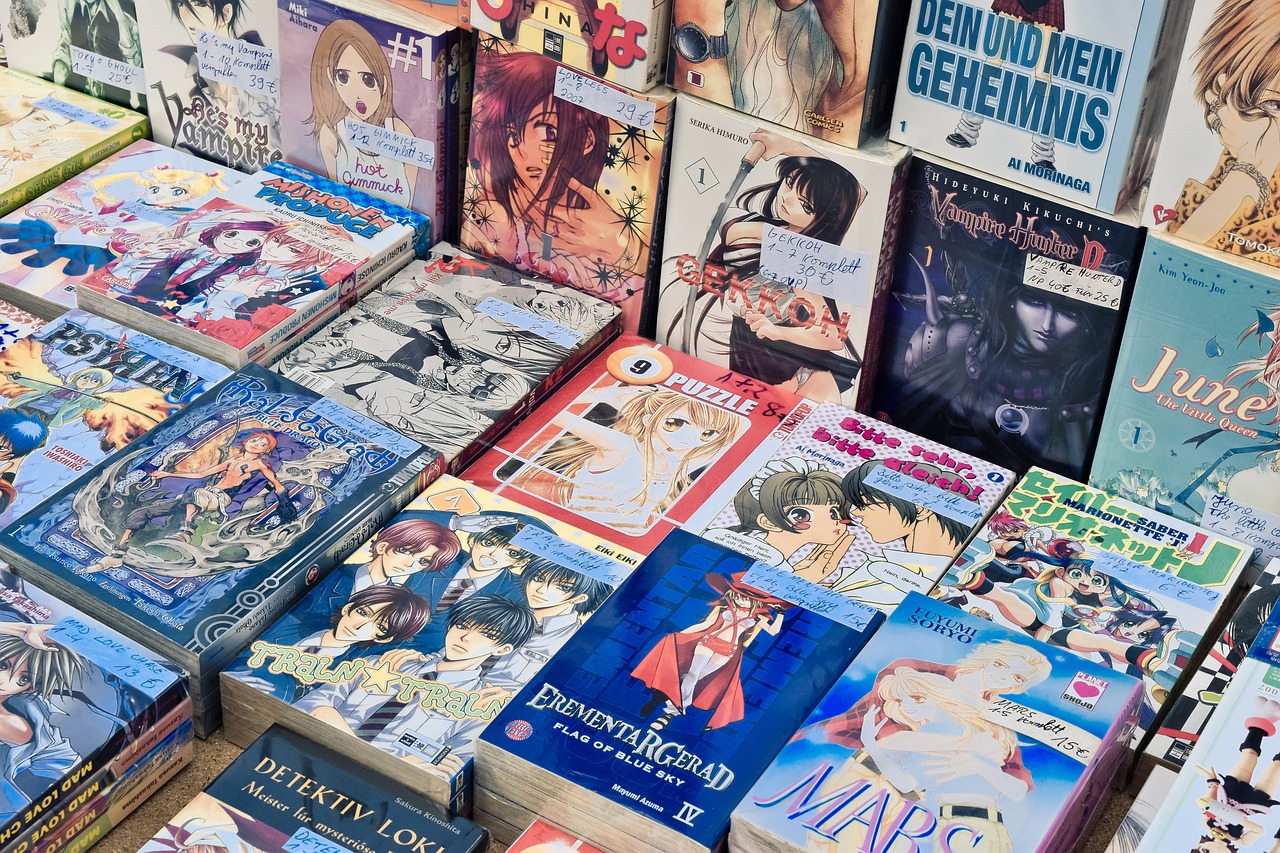Meaning of Left Back Twitch According to Primbon and Medical Explanation
There are many meanings behind twitches in the body, both beneficial and detrimental. For example, the meaning of left back twitch in primbon is as follows:

Kapanlagi.com - Light novels are one of the popular fiction formats in Japan that are often illustrated and targeted at teenage or young adult readers. Light novels usually have lighter stories, often related to genres such as fantasy, adventure, romance, or isekai.
In the world of anime, light novels are often adapted into anime series. This adaptation process often creates an increase in popularity for both the light novel and the anime. Some famous anime adapted from light novels include SWORD ART ONLINE, NO GAME NO LIFE, and RE:ZERO.
So, for those of you who are curious about the explanation of light novels, here is a complete definition of light novels along with their characteristics and differences from novels. Let's check it out, KLovers.

Illustration (credit: pixabay.com)
The understanding of light novel is a format or type of novel that is very popular in Japan, especially among teenage and young adult readers. Known as "raito noberu" in the Japanese language, light novels have their own distinctive characteristics that set them apart from conventional novels.
One of the most notable characteristics is its light and easy-to-understand writing style, making it a suitable choice for readers seeking relaxed and enjoyable entertainment. Not only that, light novels are often accompanied by attractive illustrations.
This adds visual appeal for readers. The stories in light novels often continue from one volume to the next, creating a strong interest for readers to follow the development of the story and its characters.
In addition, many light novels are later adapted into manga, anime, or video games. This makes light novels one of the main sources of inspiration in the Japanese entertainment industry, including anime, movies, and video games.
It is not surprising that light novels have become an integral part of Japanese pop culture and continue to gain loyal fans worldwide, becoming increasingly popular to this day. For those who are curious, it is a must to read some popular light novels in Japan.

Illustration (credit: pixabay.com)
Light novels are a novel format that has distinctive characteristics that differentiate them from other types of novels. Overall, light novels are a popular novel format in Japan with unique characteristics that make them interesting and appealing to readers.
Especially for those who enjoy light and entertaining stories. And here are some common characteristics found in light novels:
1. Light and Easy to Read
Light novels usually have language that is easy to understand and light, making them suitable for teenage readers. Short chapters and fast writing style in light novels make them easy to consume.
2. Targeted for Young Readers
Light novels are usually targeted at teenage or young adult readers. The stories often address themes relevant to this group, such as adventure, fantasy, romance, or school life.
3. Light and Easy-to-Understand Writing Style
Light novels have an easy-to-understand and light writing style. The sentences tend to be simple and not complicated, making it suitable for readers who want relaxed and enjoyable entertainment.
4. Interesting Illustrations
One characteristic of light novels is the presence of illustrations accompanying the text. Each chapter or section in a light novel is often illustrated with pictures depicting the characters in the story or the atmosphere of the story's setting. These illustrations not only clarify the story's imagery but also add visual appeal for the readers.
5. Continuing Story
Many light novels have a story that continues from one volume to the next. This creates a strong interest for readers to keep up with the development of the story and its characters.
6. Genre Diversity
Light novels cover various genres, ranging from fantasy, adventure, romantic stories, to school life-related stories. This allows readers to find stories that suit their interests.
7. Can be Adapted into Other Media
Many light novels are later adapted into manga, anime, or video games. This makes light novels an important source of inspiration in the Japanese entertainment industry, especially in the anime and manga genres.

Illustration (credit: pixabay.com)
It turns out there are quite a few differences between novels and light novels. The differences between novels and light novels lie in several aspects including writing style, target audience, story structure, and some additional elements. Here are the main differences between the two:
1. Writing Style and Language
Regular novels tend to have a more serious and complex writing style, with the use of more complicated language. On the other hand, light novels have a lighter, easier to understand writing style, and sometimes incorporate popular expressions or slang.
2. Target Audience
Regular novels are not limited to a specific age group and can be aimed at various groups of readers. Meanwhile, light novels are often targeted at teenage or young adult readers, with stories that are more suitable to their interests and experiences.
3. Illustration
Light novels are often accompanied by interesting illustrations in each chapter, while regular novels rarely have illustrations, or if they do, they are not as common as in light novels.
4. Story Length
Regular novels tend to have longer stories, with deeper character development and background. On the other hand, light novels often have shorter and more direct stories, with a focus on fast-paced and captivating plot.
5. Story Structure
Light novels often have a simpler and more direct story structure, with a lot of dialogue and minimal description. Regular novels may have a more complex story structure, with more character development, subplots, and detailed descriptions.
6. Themes and Genres
Although the themes and genres in both types of novels vary, light novels often lean towards fantasy, adventure, or lighter stories, while regular novels can encompass a wider range of themes and genres.
7. Influence and Adaptation
Light novels are often adapted into manga, anime, or video games, thus having a significant influence in the Japanese entertainment industry. Ordinary novels may also be adapted into films or other media, but not as common as light novels.
That is an explanation of the understanding of light novels that KLovers can know. In addition, there is also an explanation of the characteristics of light novels along with the differences between light novels and novels.
(kpl/dhm)
Cobain For You Page (FYP) Yang kamu suka ada di sini,
lihat isinya
There are many meanings behind twitches in the body, both beneficial and detrimental. For example, the meaning of left back twitch in primbon is as follows:
The virtual world has become a program that will greatly develop in the future. In fact, there are several Korean dramas that take on this theme, one of which is a Korean drama about self-exploration in the virtual world below.
Here are easy ways to keep lips looking naturally red.
Here are a series of quick ways to make hair grow faster that can be done at home.
Currently, smartphones are not only used for communication, but can also be used for various purposes including scanning photos. For those of you who are curious about how to scan photos on your phone easily and practically, here are some ways to scan photos on your phone. You can use applications or free online sites.
One of Spotify's excellent features is the song download feature, so users can enjoy their favorite songs offline. This process is very easy to do, especially on laptops. Curious, how to do it?
Here's how to quickly and easily check XL numbers.
In Japanese dramas, there are many love stories with unique and interesting themes, one of which is the enemy to lovers trope. Let's take a look at some exciting and not-to-be-missed Japanese dramas with the enemy to lovers trope.
The world of anime has a variety of interesting stories about card games that can captivate viewers with their intrigues. Like some of the following anime recommendations about card games.
Film KILLING GUNTHER is a comedy-action film directed by Taran Killam. And here is the synopsis of the film KILLING GUNTHER along with the list of cast and character explanations.
The film JONAH HEX, released in 2010, tells an exciting and thrilling story of action and revenge. Here is the complete synopsis of the film JONAH HEX, along with a list of cast members and explanations of their characters.
Activating NFC on the iPhone is actually quite easy and can be done through device settings. Curious, how to do it? To find out, just read the following review.